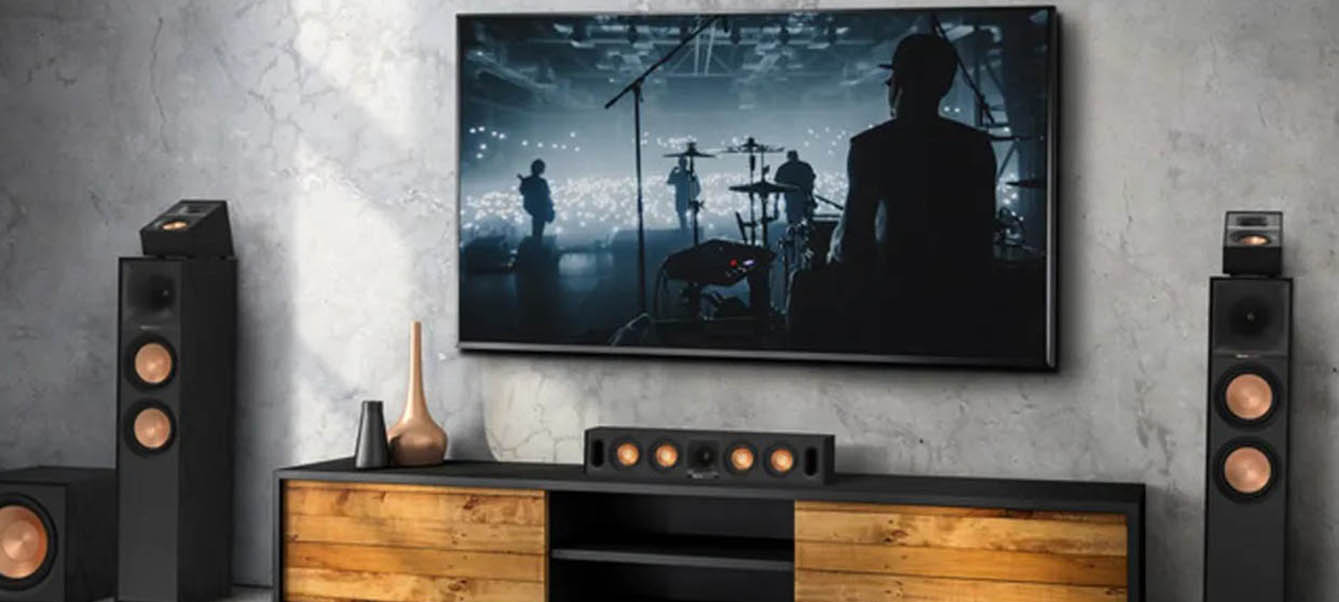In the realm of modern home entertainment, a home theater system can greatly enhance your viewing experience compared to traditional television watching. The introduction of soundbars has made it easier for people to achieve immersive sound without the complexity of full surround sound setups. We will explore the key components of a home theater system, including audio-video receivers, TVs or projectors, room layout, and streaming devices, and focus specifically on choosing the right soundbar to optimize your home theater experience.
1. What Composes a Home Theater System?
1.1 Audio-Video Receiver
1.1.1 Functions of an Audio-Video Receiver
The audio-video receiver (AV receiver) is the heart of a home theater system. It powers the system and acts as the central hub for all your entertainment components. The AV receiver is responsible for connecting and switching between different audio and video sources, decoding various audio formats, and amplifying sound to drive your surround sound speakers. Most modern AV receivers also come with a built-in tuner for radio and satellite reception, making them versatile for various entertainment needs.
1.1.2 Selection Tips
When choosing an AV receiver, consider the following factors:
- Power Output: Ensure that the receiver has enough power to drive your speaker system adequately.
- Decoding Capability: Opt for a receiver that supports the latest audio decoding formats, such as Dolby Atmos and DTS:X, to achieve superior sound quality.
- Input/Output Ports: Check that the receiver has sufficient input and output ports to accommodate all your devices, including Blu-ray players, game consoles, and TVs.
- Network Features: Many modern receivers offer network connectivity features, allowing for firmware updates and streaming content over the internet.
1.2 TV or Video Projector
1.2.1 Choosing the Right Display Device
Your display screen is crucial to the overall home entertainment experience as it serves as your “stage.” While TVs remain a popular choice, video projectors can offer a larger screen experience if your room setup allows for it. When choosing between options such as LCD, LED, OLED, or 4K Ultra HD TVs, consider what best suits your viewing needs.
1.2.2 Size and Placement
- Size: Select a screen size that complements your room dimensions. The ideal screen diagonal length should be 1.5 to 2 times the distance from where you will be sitting.
- Placement: The TV or projector should be positioned at an optimal height, aligned with your eye level to ensure a comfortable viewing angle. Avoid placing objects above or below the screen that could obstruct the view.
1.3 Room Layout
1.3.1 Shape and Arrangement
The shape and layout of your room significantly impact how well your home theater system performs. A room that is close to a rectangular shape is generally ideal for home theaters, as it helps to evenly distribute sound. Low-light environments are preferable for reducing screen glare, and appropriate curtains can help manage ambient light.

1.3.2 Lighting and Flooring Materials
- Lighting: Use dimmable lights or adjustable fixtures to avoid glare on the screen and to create a comfortable viewing atmosphere.
- Flooring: Carpeting can absorb unwanted sound and reduce echo and uneven bass, while hard floors may contribute to sound reflections and increased reverberation. Choose flooring that complements your room’s acoustics.
1.4 Streaming Devices
1.4.1 Role of Streaming Devices
In the digital age of OTT (Over-the-Top) platforms, streaming devices are essential for accessing content from services like Netflix, Prime Video, Disney+, and more. These devices connect your TV or home theater system to the internet, allowing you to stream videos, movies, sports, and music through various apps and services.
1.4.2 Choosing and Connecting Streaming Devices
- Device Selection: Streaming devices come in various forms, including Amazon Fire Stick, Google Chromecast, and Apple TV. Choose a device based on its compatibility, operating system, and features.
- Connection Method: Most streaming devices connect to your TV via an HDMI port. Some devices, like stick-style ones, plug directly into the HDMI port. Connect the device to your home Wi-Fi network, and you’re ready to enjoy your streaming services.
2. Choosing the Right Soundbar
2.1 Advantages of Soundbars
Soundbars have become popular due to their sleek design and impressive audio performance. Compared to traditional home theater audio systems, soundbars are easier to install and offer high-quality sound. They typically integrate multiple speaker units within a single, slim enclosure, providing surround sound effects while saving space.
2.2 Key Factors in Selecting a Soundbar
2.2.1 Sound Quality

When selecting a soundbar, sound quality is paramount. Ensure that the soundbar provides clear highs, rich mids, and robust bass. Many high-end soundbars support advanced audio technologies like Dolby Atmos, which enhance the immersive sound experience.
2.2.2 Connectivity Options
Soundbars come with various connectivity options, including HDMI ARC, optical, Bluetooth, and Wi-Fi. Choose a soundbar that supports the connectivity options compatible with your devices to ensure seamless integration and operation.
2.2.3 Design and Size
The design of the soundbar should complement your TV or projector setup. Choose a soundbar that matches your room layout and TV size for a cohesive look. Consider whether the soundbar will be mounted on the wall or placed on a surface, and check if it requires a separate subwoofer.
2.3 Installation and Setup
Proper installation and setup of your soundbar are crucial for achieving the best audio experience. Follow the manufacturer’s installation instructions carefully, adjusting the soundbar’s position and angle to optimize sound distribution. Ensure all connections are secure to avoid any audio issues.
Selecting the right home theater system involves considering multiple components, including the audio-video receiver, TV or projector, room layout, and streaming devices. The soundbar, as a central element in modern home theaters, should be chosen based on its sound quality, connectivity options, design, and size. By carefully evaluating these factors, you can create an exceptional home theater system that enhances your entertainment experience, whether you’re watching movies, TV shows, or enjoying music. A well-chosen home theater setup will transform your living space into a cinematic retreat, offering outstanding audio-visual enjoyment.



